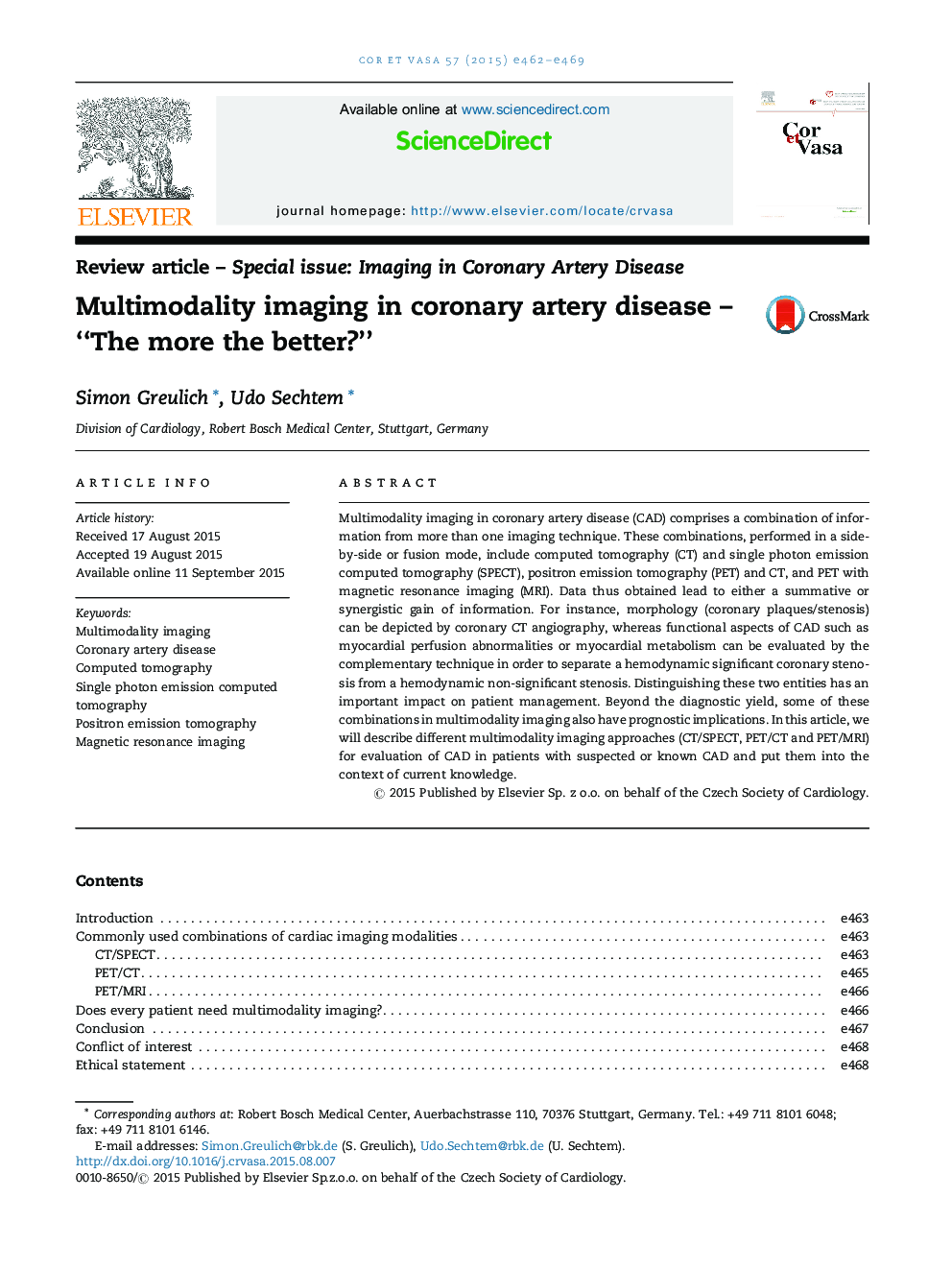| Article ID | Journal | Published Year | Pages | File Type |
|---|---|---|---|---|
| 2722367 | Cor et Vasa | 2015 | 8 Pages |
Multimodality imaging in coronary artery disease (CAD) comprises a combination of information from more than one imaging technique. These combinations, performed in a side-by-side or fusion mode, include computed tomography (CT) and single photon emission computed tomography (SPECT), positron emission tomography (PET) and CT, and PET with magnetic resonance imaging (MRI). Data thus obtained lead to either a summative or synergistic gain of information. For instance, morphology (coronary plaques/stenosis) can be depicted by coronary CT angiography, whereas functional aspects of CAD such as myocardial perfusion abnormalities or myocardial metabolism can be evaluated by the complementary technique in order to separate a hemodynamic significant coronary stenosis from a hemodynamic non-significant stenosis. Distinguishing these two entities has an important impact on patient management. Beyond the diagnostic yield, some of these combinations in multimodality imaging also have prognostic implications. In this article, we will describe different multimodality imaging approaches (CT/SPECT, PET/CT and PET/MRI) for evaluation of CAD in patients with suspected or known CAD and put them into the context of current knowledge.
